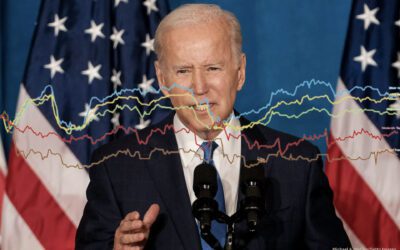President Obama emerged from his convention with the biggest lead of the year in our polling—and at 50 percent in the race. According to the latest national survey by Greenberg Quinlan Rosner for Democracy Corps, the President holds a 5-point lead on the ballot, up a net 3 points since just before the Republican convention.[1] With the Romney campaign reeling on issues unrelated to the economy, the President enters the fall campaign in a much stronger position to sustain a lead, bolstered by the dynamics of the race. He has made gains among key groups in the progressive base, including unmarried women and young people and with key swing groups—climbing above 40 percent among white voters and making gains with white non-college-educated voters.
If the two conventions set out to reach women, the President won hands down here, making major gains with both college-educated and non-college-educated women. Obama is ahead with white women, 50 to 46 percent—an 18-point net gain since August.
And if the two conventions battled over Medicare and seniors, the President ended up with a 6-point advantage on who voters trust more on Medicare (with an 11-point advantage on intensity) and significant vote gains among seniors.
Key Findings:
· Obama leads by 5 points on the ballot, 50 to 45 percent against Mitt Romney. All of the President’s gains came with what we have called the Rising American Electorate—young people, minorities, and unmarried women—the new broad base for progressives. This was a base convention for Democrats whose base forms nearly half of the electorate. Obama is now winning 68 percent of unmarried women – matching his 2008 level with this group.
· Romney’s running mate, Paul Ryan, is not helping the ticket. His personal rating has not improved in the three weeks since the Republican convention – stuck in slightly negative territory.
· The engagement gap. Nearly an equal number of Democrats and Republicans now say they are following the election very closely. But minorities, unmarried women, and particularly women, trail the electorate overall on this key measure.
· Both candidates improved their personal images in the conventions, but Mitt Romney remains in negative territory—and he is running out of opportunities to change voters’ gut feelings about him. In our monthly tracking dating back to January 2011, Mitt Romney has yet to receive a net positive personal rating.
· Obama makes gains, but the weak economy still helps Romney. Obama has narrowed Romney’s advantage on the economy to a 2-point deficit, but that still creates downward pressure in the race. There is no improvement in the country’s economic mood, even if there is greater confidence in its leadership.
National mood
Despite lackluster jobs reports, the national mood has improved substantially since the pre-convention period. More voters now believe the country is heading in the right direction than at any time in the last three years—and up 7 points since late August. However, 55 percent still think the country is on the wrong track and 57 percent give the state of the economy an unfavorable rating, with no real improvement on the economy in sight.
Romney unable to crack the likeability code
Both conventions provided a personal lift to the two headliners. Both candidates’ favorable ratings have improved since the pre-convention period, an expected result given two weeks of unmitigated cheerleading. Obama’s mean rating on our thermometer scale is 51.9, with 50 percent giving him a warm, favorable rating. This is a 2-point gain since late August, and is emblematic of his remarkable consistency as a likeable figure.
While Romney was able to make some personal gains out of the convention (up 3 points since August), he remains in negative territory (net negative 4 points on our thermometer scale). It is difficult to see when and whether Romney will be able to improve on this result, as Republicans have already consolidated around their nominee. Romney’s personal image among Republicans improved a net 9 points since August, and has improved a net 26 points since May – clearly a base slowly coalescing around its leader, however reluctantly. He improved a net 8 points among conservatives.
Without another opportunity like the Republican convention to highlight his personal strengths, it is difficult to see a vast improvement for Romney on personal image.

This is also not a good moment for Mitt Romney, who closes this week reeling—distracted by missteps on Obamacare and foreign policy faux pas—losing his supposed laser-like focus on the economy, which still has the potential to erode Obama’s lead despite his gains on the issue.
Obama leads by 5 points out of convention
This translates to a real advantage for Barack Obama on the ballot. Half of all likely voters now say they will vote for President Obama, who leads Mitt Romney by 5 points, 50 to 45 percent. This is Obama’s largest lead to date in our tracking, with Obama hitting 49 or 50 percent in our last 4 polls. Romney is a 45 percent and his ceiling looks like 47 percent.

Obama’s biggest gains come with some important groups. Obama leads Romney among unmarried women 68 to 28 percent, up a net 13 points from just three weeks ago and matching his 2008 level with this crucial voting bloc, who have thus far been underperforming for the president on the ballot. Among white non-college-educated voters, a group McCain won by 18 points in 2008, Obama is now only down to Romney 40 to 55 percent – the closest Obama has been among this group in our tracking going back to January 2011. Obama has pulled nearly even with seniors, after seeing double-digit deficits earlier in the year.
Romney has consolidated Republicans, who have moved a net10 points toward Romney since August. Just 2 percent of Republicans say they are voting for Obama. In our measure of presidential support, Obama has a stronger base of loyalist support and a higher ceiling than Romney. According to our model, Romney has a ceiling of only 49 percent compared to 53 percent for Obama.
With not a lot of voters identifying as Republican after the convention, the independents look a lot more Republican. Romney leads by 9 points with independents. That probably also makes further gains for Obama quite grudging.
[1] This memo is based on a national survey of 1,000 likely 2012 voters, conducted September 8-12, 2012 by Greenberg Quinlan Rosner for Democracy Corps. Unless otherwise noted, margin of error= +/- 3.1.




